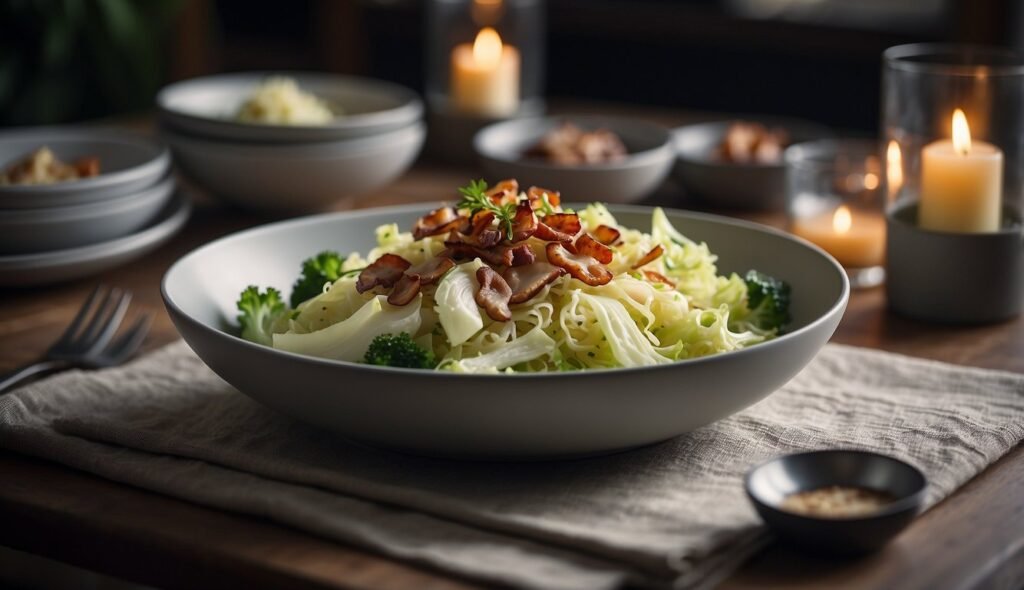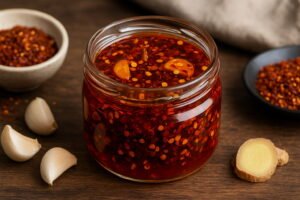If you’re looking for a delicious and healthy addition to your paleo diet, look no further than napa cabbage. This versatile vegetable is a staple in many paleo recipes, thanks to its mild flavor and crunchy texture. Not only is napa cabbage low in calories, but it’s also packed with nutrients like vitamin C, vitamin K, and fiber.
One of the great things about napa cabbage is that it’s incredibly versatile. You can use it in a variety of dishes, from stir-fries to soups to salads. It works well as a substitute for traditional cabbage in recipes like cabbage rolls or coleslaw, and it can also be used as a wrap for other ingredients like ground beef or chicken. Plus, napa cabbage is easy to prepare and cook, making it a great option for busy weeknights.
Whether you’re looking to add more veggies to your diet or simply want to try something new, napa cabbage is a great choice. With its mild flavor and impressive nutritional profile, it’s a vegetable that’s sure to become a staple in your kitchen. So why not give it a try and see what delicious paleo recipes you can create with napa cabbage?
Benefits of Napa Cabbage in Paleo
Napa cabbage is a great addition to the Paleo diet because it is a low-carb vegetable that is packed with nutrients. It is rich in fiber, vitamin C, vitamin K, and folate, which can help to support a healthy immune system, promote healthy digestion, and reduce the risk of chronic diseases.
Napa cabbage is also a good source of antioxidants, which can help to protect the body against oxidative stress and inflammation. This can be particularly beneficial for people who are following the Paleo diet, as the diet is high in animal protein, which can be pro-inflammatory.
In addition, Napa cabbage is a versatile vegetable that can be used in a variety of Paleo-friendly dishes, such as stir-fries, soups, and salads. It has a mild, sweet flavor and a tender texture, which makes it a great substitute for other types of cabbage in recipes.
Overall, incorporating Napa cabbage into your Paleo diet can provide a range of health benefits and help to add variety to your meals.
Incorporating Napa Cabbage
If you are following a paleo diet, incorporating napa cabbage into your meals is a great way to add flavor, texture, and nutrition to your dishes. This versatile vegetable is low in calories and high in fiber, making it a perfect addition to any meal. Here are some tips on selecting fresh napa cabbage and some paleo-friendly napa cabbage recipes to help you get started.
Selecting Fresh Napa Cabbage
When selecting napa cabbage, look for heads that are firm and heavy for their size. The leaves should be crisp and bright green with no signs of wilting or discoloration. Avoid heads with yellow or brown spots, which can indicate decay. Once you have selected your napa cabbage, store it in the refrigerator for up to a week.
Paleo-Friendly Napa Cabbage Recipes
Napa cabbage is a versatile vegetable that can be eaten raw or cooked. Here are some paleo-friendly napa cabbage recipes to inspire your next meal:
- Stewed Napa Cabbage: This quick and easy recipe from Paleo Flourish is a great way to add flavor to your meals. Simply add coconut oil, napa cabbage, tomatoes, and bell pepper to a pot and cook until the cabbage is tender.
- Stir-Fried Napa Cabbage with Mushrooms and Bacon: This recipe from Nom Nom Paleo is a delicious and satisfying meal that can be made in just a few minutes. Simply stir-fry napa cabbage with mushrooms and bacon for a flavorful and filling dish.
- Paleo Chinese Cabbage Stir-Fry: This recipe from I Heart Umami is a healthy and delicious way to enjoy napa cabbage. Simply stir-fry napa cabbage with carrots, garlic, ginger, and spices for a flavorful and nutritious meal.
Incorporating napa cabbage into your paleo diet is a great way to add flavor, texture, and nutrition to your meals. With these tips on selecting fresh napa cabbage and these paleo-friendly napa cabbage recipes, you can enjoy this versatile vegetable in a variety of delicious and healthy ways.
Meal Planning and Preparation
Weekly Paleo Meal Prep
Planning your meals in advance is a great way to stick to your paleo diet and ensure that you have healthy, satisfying meals throughout the week. When planning your meals, consider using napa cabbage as a versatile and nutritious ingredient.
To start, make a list of your favorite paleo napa cabbage recipes. Choose recipes that use similar ingredients so that you can save time and money by buying in bulk. Once you have your recipes, create a grocery list and head to the store.
When you get home, take some time to prep your ingredients. Wash and chop your napa cabbage, and portion out any other ingredients that you’ll be using. This will save you time when it comes to cooking your meals throughout the week.
Next, cook your meals in bulk. Use your recipes to guide you, and cook enough food to last you for several days. Once your meals are cooked, portion them out into individual containers and store them in the fridge or freezer.
Storing and Preserving Napa Cabbage
Napa cabbage is a great ingredient to have on hand, as it can be used in a variety of dishes. To ensure that your napa cabbage stays fresh, store it properly.
To start, remove any wilted or damaged leaves from your napa cabbage. Then, wrap it tightly in plastic wrap and store it in the crisper drawer of your fridge. Napa cabbage can last up to two weeks when stored properly.
If you have extra napa cabbage that you won’t be able to use before it goes bad, consider preserving it. Napa cabbage can be pickled, fermented, or even frozen.
To pickle napa cabbage, slice it thinly and place it in a jar with vinegar, salt, and spices. Let it sit in the fridge for a few days before using.
To ferment napa cabbage, chop it into bite-sized pieces and pack it tightly into a jar. Add salt and water, and let it sit at room temperature for a few days. Once it’s fermented, store it in the fridge.
To freeze napa cabbage, blanch it in boiling water for a few minutes and then shock it in ice water. Pat it dry and then store it in an airtight container in the freezer.



